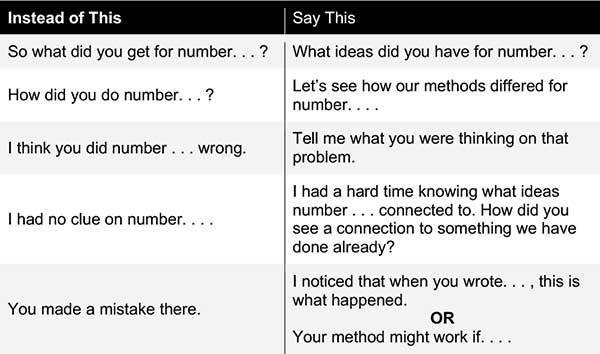By Carmel Schettino, posted November 7,
2016 —
For the past few years I’ve been grappling with the question of students’ contribution to class discussion and how it helps their problem solving. We teachers are not mindreaders, so it is difficult to tell what students are absorbing even when they are engaged,
asking questions, and making comments. I am in favor of not forcing students to participate but rather of allowing them to contribute in such ways as writing in a journal or helping a peer during class when they are inspired to do so.
Many people who teach with PBL take this approach: You give the whole class a problem; they discuss different perspectives from which each student viewed it (what prior knowledge they brought to it, what new ideas it inspired, etc.); and learning ensues. For many students, learning
through listening is very difficult, especially when they are in large groups. Others, for various reasons, find asking questions scary or uncomfortable. But in a class where questioning is fundamental to how the problems have been written, student interaction is even more important.
Space at my school allows students to work in groups and use technology to project interactive geometry software demos, files from their computer or tablet, or move over to a whiteboard to collaborate on problems.
In small-group conversations, many students who thought they knew all the answers would simply lead the discussion and not really listen to the others. Often, as I walked around, a student would turn to me and say, “We’re done with all of the problems.”
Looking at one of the students who didn’t generally say much, I would ask, “Really? Tell me about number three.”
When group members could not support an individual’s justification—probably because their earlier discussion was incomplete—they would go back to the drawing board and think about the question again. It was pretty eye-opening for them.
Students had been used to a lot of whole-class discussion; it was time for us to brainstorm better ways to talk in small groups. As a class, we came up with this list:

I would love to hear about other people’s ideas of students’ small-group conversations that do not necessarily happen in large-group discussions or lecture classes. I think many students in the earlier grades are not facile in talking mathematically this way, but this kind
of communication is integral to student learning in PBL.
After using this approach in my classes a few times every week, I did see a huge shift in whole-class discussions as well. Some students who had felt uncomfortable sharing their ideas at first gained confidence and even liked taking risks. They began to do this in the larger
group setting as well. Overall, hearing more voices and seeing from multiple perspectives enhanced our classroom environment.
 With problem-based learning as her specialization, Carmel Schettino obtained a PhD in math education while teaching at the secondary level for more than twenty years. She is passionate about helping teachers grapple with the pedagogical and curricular
questions that arise when PBL is brought into the math classroom. Her other areas of expertise include gender equity, discourse, technological implications and PBL's relationship to the Common Core. Schettino has consulted for a number of schools, has presented for NCTM (e.g., Annual Conferences
2015 and
2016) and has published articles with respect to PBL in the secondary mathematics classroom. Find her blog at
carmelschettino.org
, and contact her at
[email protected]
.
With problem-based learning as her specialization, Carmel Schettino obtained a PhD in math education while teaching at the secondary level for more than twenty years. She is passionate about helping teachers grapple with the pedagogical and curricular
questions that arise when PBL is brought into the math classroom. Her other areas of expertise include gender equity, discourse, technological implications and PBL's relationship to the Common Core. Schettino has consulted for a number of schools, has presented for NCTM (e.g., Annual Conferences
2015 and
2016) and has published articles with respect to PBL in the secondary mathematics classroom. Find her blog at
carmelschettino.org
, and contact her at
[email protected]
.